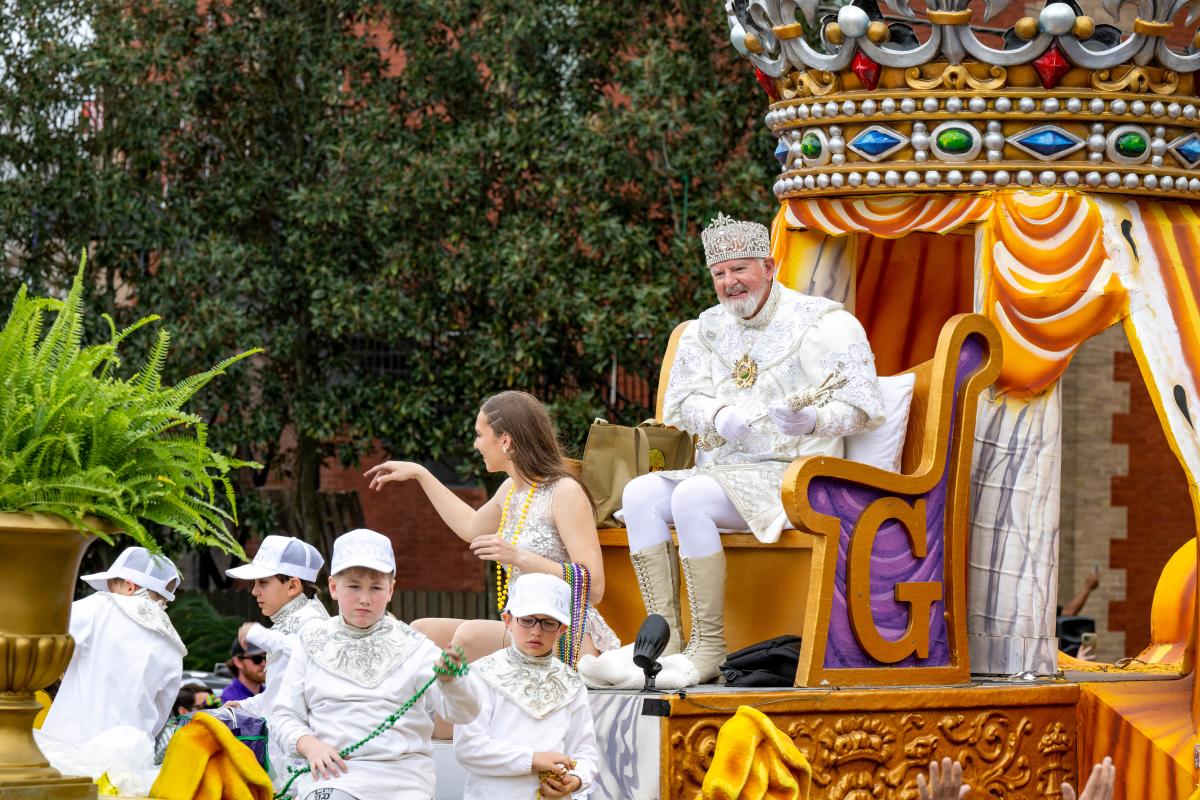Carnival is the season of merriment leading up to Mardi Gras, the Tuesday before Ash Wednesday, and the beginning of Lent. During Carnival, south Louisiana celebrates with parades and other special events. Krewes are the organizations that sponsor the parades, which are sometimes preceded by krewe pageants and balls. The krewes pay for all the expenses of their balls and parades, including the throws krewe members fling to waiting parade-goers lining Lafayette streets.

The tradition of throwing doubloons, beads, and trinkets started in New Orleans in the early 1870s when the city's Twelfth Night Revelers flung trinkets to the crowds while they made their way through New Orleans streets. The idea was so popular with their audience that the tradition continues today, although modern throws primarily involve beads. The New Orleans Rex parade began throwing doubloons 1960, a modern take on the ancient pirate coin. These silver, gold, bronze-colored aluminum, and cloisonné coins are not as popular as they used to be, but they are still coveted as collector items.
In addition, special throws with the krewes emblem can become valuable over time. For instance, The Krewe of Carnivale en Rio in Lafayette offers theme-based beads, cups, and T-shirts that differ yearly. Parades in Lafayette begin with the Krewe of Rio, then follow with three on the weekend before Mardi Gras. On Monday evening is Queen Evangeline's Parade, but many of the women's krewes in town will also be riding on the parade floats. On Mardi Gras day, Lafayette has three parades: the long-standing King Gabriel's Parade at 10 a.m., the Lafayette Mardi Gras Festival Parade at 1 p.m., and the Independent Parade at 2:30 p.m.

Carnival parades in Lafayette cater to families, so barricades are set up along the entire parade route from downtown Lafayette to Cajun Field. Lafayette Travel offers a handy parade map, so a good action plan is to scout a home base, preferably near places where children can rest if needed and use facilities such as Port-A-Potties or bathrooms at amiable businesses. Cajun Field, where the parades conclude, has a massive parking lot and space for children to run around. There's also Le Festival de Mardi Gras a Lafayette, a carnival with rides and live music at Cajun Field. Crowds gather along the parade route, so keep a good eye on your children. Police recommend writing the child's last name and parent's cell phone number on their clothing or putting the information on a card attached to their clothing with a safety pin. Tell your child to find a police officer who will be present along the parade route if they get lost.

Winter in Louisiana changes constantly; it may be in the 70s one day (what we call parade weather) and drop below freezing as a cold front passes through. Be prepared and dress for cold and warm temperatures, using clothing layers that can be added or removed depending on the weather, and keep hats and gloves handy. Blankets are suitable for picnics and for children to sit on, but can also be used for warmth should the weather turn cold. It's also a good idea to bring along an umbrella.
For a complete list of Carnival parades, click here for more info on balls and other activities in Lafayette and surrounding cities.
